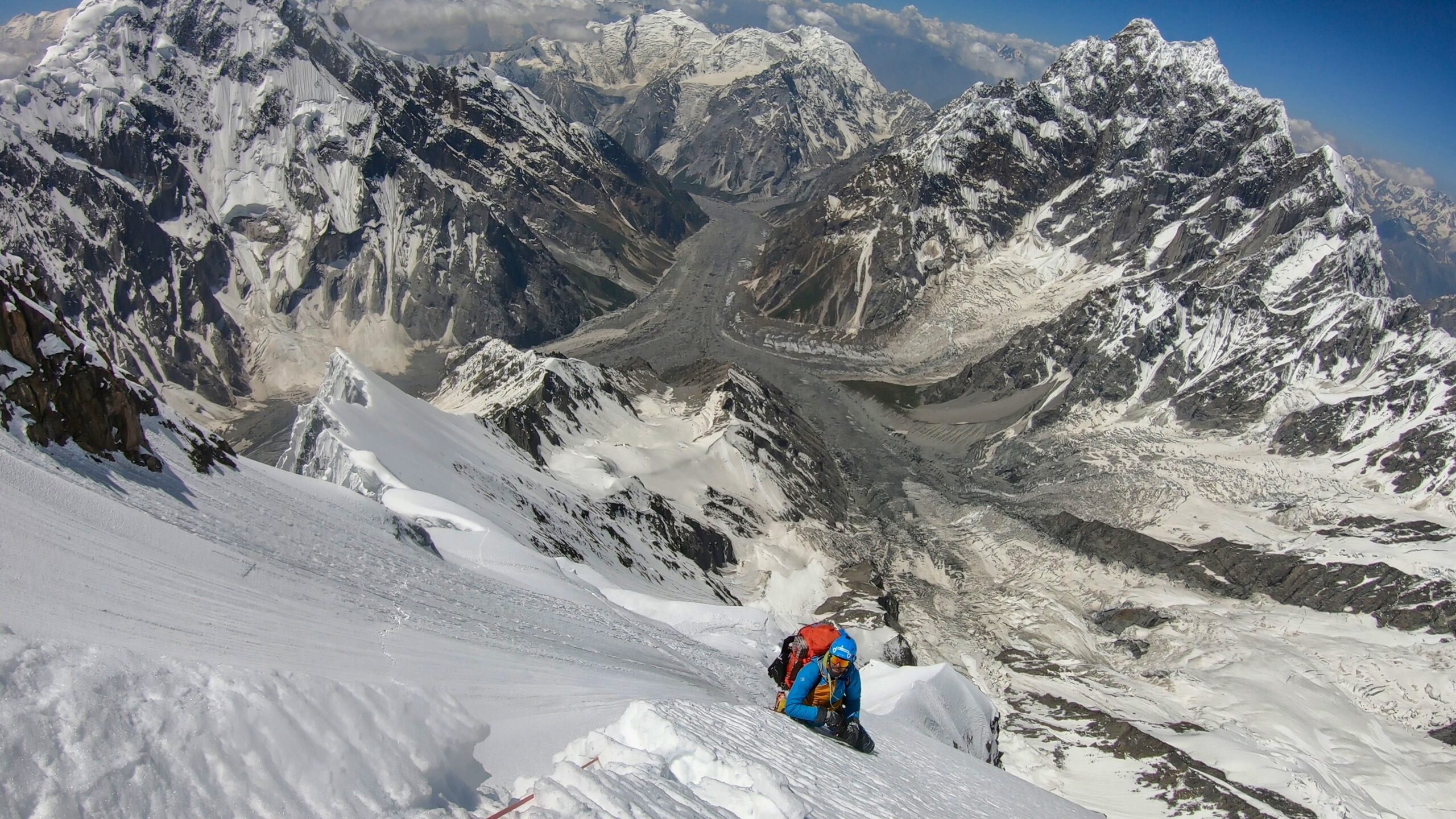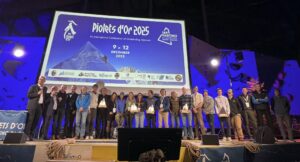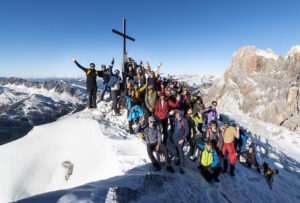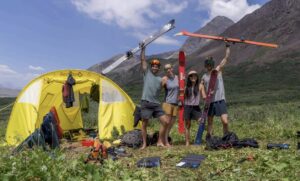The lure of the “highest” is the essence of high-altitude mountaineering. Despite nearly annual attempts, Muchu Chhish stood for years as the world’s highest virgin peak open to climbers.
Luckily, it remained out of the plans of heavier expeditions willing to use money and manpower to siege the peak into submission. The first ascent has finally been done in great style by a trio of regulars from our Top 10 list over the last few years.
Here is how Zdenek Hak, Radoslav Groh, and Jaroslav Bansky solved one of the great remaining problems in the Karakoram after a six-day push.
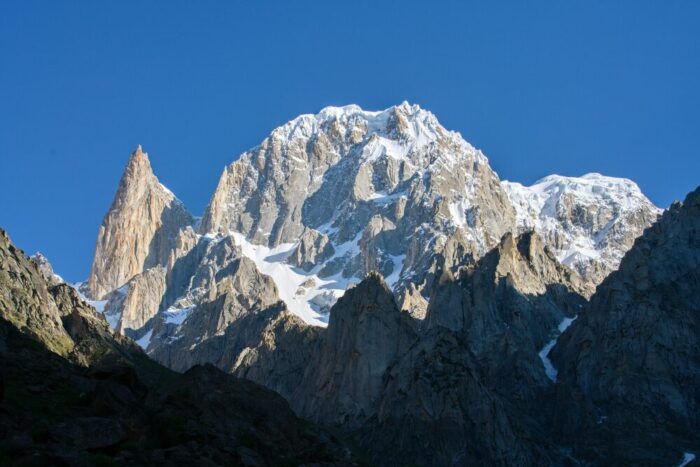
The Batura wall. Photo: Czech Expedition 2024
Not a mountain?
Strictly speaking, Muchu Chhish (7,453m) is not a peak but a point on a massif, and not even the highest point. We’re referring to the impressive 40 to 50km-long Batura range in the Karakoram, and specifically, to the so-called Batura Wall. All points on this 14km ridge are above 7,000m. However, Muchu Chhish is the only one that had not been reached, mainly because of its isolated location on the ridge.
Moreover, the legend of its difficulty and danger grew with each failure, tantalizing young climbing teams and even some eccentric solo adventurers.
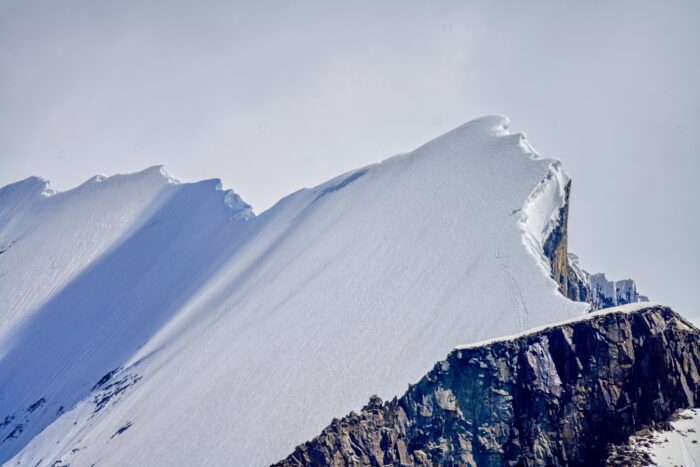
The infamous ridge leading to the summit of Muchu Chhish. Photo: Czech Expedition 2024
Among those trying, the most stubborn were high-level climbers from the Czech Republic, led by Pavel Korinek in 2020, 2021, and 2023. In 2023, they climbed to the edge of their physical endurance and still failed to reach the summit. They had to retreat just 250 meters from the top.
One of the members on that attempt was Piolet d’Or winner Radoslav Groh. This was his first attempt at the Batura Wall, but he decided it wouldn’t be the last. Later that year, Groh joined fellow Czech Zdenek Hak on an impressive new route on Cholatse. During that expedition, they no doubt discussed Muchu Chhish.
B-plan
At first, Hak had something else in mind: an expedition to Afghanistan’s Hindu Kush. But entering the Taliban-ruled country proved impossible. At that point, Groh pressed his case for Muchu Chhish.
First, the two climbers called Pavel Korinek and politely asked for his permission to give “his” peak a try. Once granted, Hak and Groh traveled to Pakistan on June 6, accompanied by Jaroslav Bansky.
At first, nothing went right. They originally planned to acclimatize on a nearby 6,000’er, but Hak got sick.
“After a short break, we moved over the Muchuchar Glacier to base camp under Muchu Chhish itself,” Hak wrote. “We had no choice but to acclimatize right there.”
Their acclimatization consisted of a four-day climb from June 25-28.
“We slept at 4,600m, 5,400m, and 6,100m,” Hak wrote. “Except for the last camp, we follow the route of [our] planned ascent, which led along the south ridge up to 7,300m on the main ridge.”
That invalidates the alpine-style tag of their climb, but they simply had no time to acclimatize anywhere else. Forecasts called for a whole week of good weather, and they couldn’t afford to miss that chance. It was long enough for both a short acclimatization and the final push.
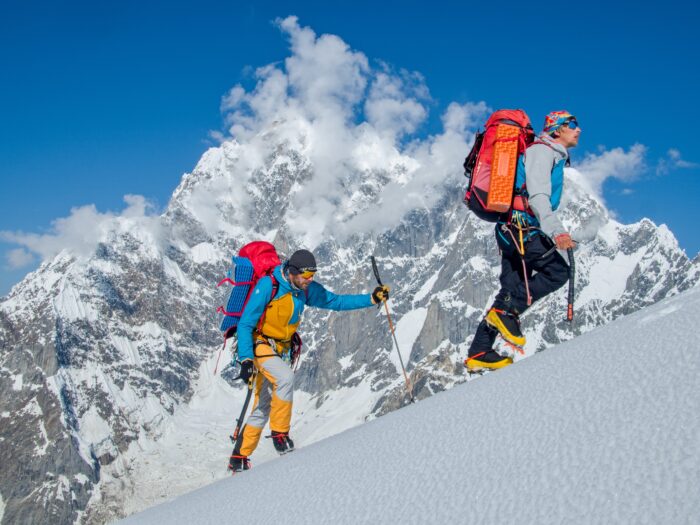
The climbers on the glacier. Photo: Czech Muchu Chhish 2024 expedition
Then, on the first day of July, the climbers set off up the south ridge of the peak, aiming to reach the summit ridge and continue toward the summit.
The route first goes up a non-technical rocky couloir and leads to the glacier at 4,800m. The team gained 500 vertical meters on the glacier until they stopped and pitched their first bivouac. It was not yet noon, but the temperature was already so hot that the climbers decided to stop and wait for safer conditions.
A long way up
The proper climb started early the following morning.
“The first pitches were on mixed and rocky terrain, with difficulties up to M4,” Hak recalls. “Then we continued on endless icy terrain, climbing diagonally up to 6,300m below a dominant serac, where we pitched our second bivouac.”
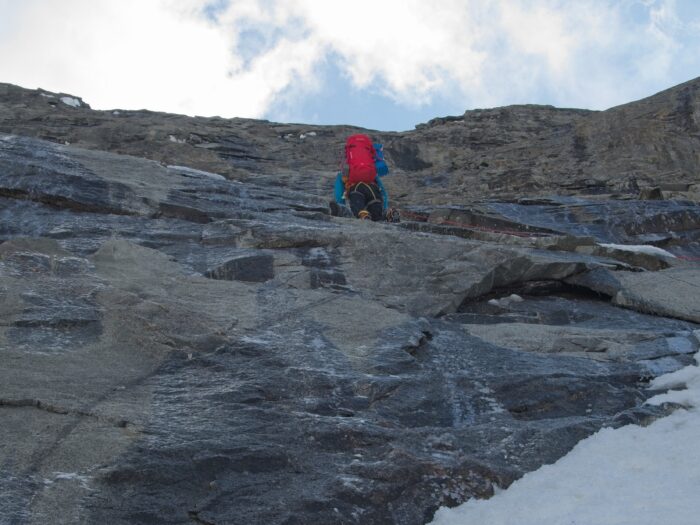
On a rocky section between the first and second bivouacs. Photo: Radoslav Groh
The third day of the climb was probably the most physically demanding: endless progress on moderately steep snowy ramps.
“The snow was so deep in some places that we had to use special snowshoes that can be inserted between the boot and the crampons,” Hak admitted. “[They were] an invaluable aid. Without them, we wouldn’t have been able to move any further.”
They gained 500 vertical meters after a long day and set their third bivy at 6,750m.
The progress was similar on the following day. As the terrain became less vertical, their advance through soft snow got slower and mentally exhausting. In addition, the climbers had to watch carefully for hidden crevasses, aware that the snow bridges would be weak.
Hak praised the endurance of Bansky, who broke trail most of that day and led the team to 7,250m, just below the summit ridge. That evening, it started to snow, but the skies cleared just in time for the final ascent to the summit.
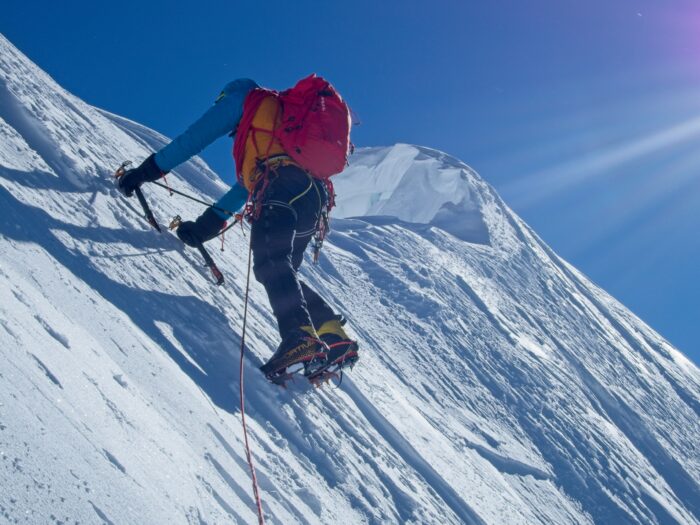
Hak traverses corniced terrain along the summit ridge of Muchu Chhish. Photo: Groh/Bansky
Final pitches
“On the morning of July 5, we set off as lightly as possible, leaving our tent and bivouac gear at the fourth bivouac site,” Hak wrote. He described the final pitches as follows:
The summit was about 1,500m west of us. We progressed about 150m, then the terrain started to get steeper. After some pitches, we reached a large rock tower below the headwall. We were about 150 vertical meters below the the top. Bansky led again, breaking trail, and we reached the summit at 10:20 am local time. There was no highest point around. We left a snow anchor there with our signatures and the inscription ‘Muchu Chhish- Krkonose Expedition.’
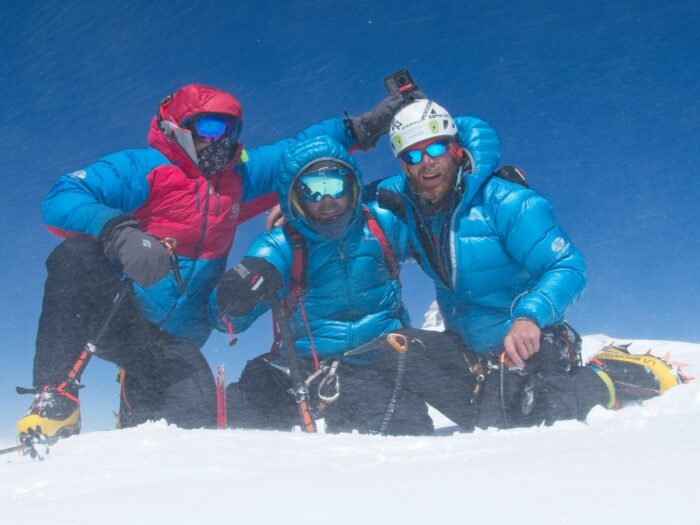
From the top of Muchu Chhish. Photo: Czech Expedition 2024
It was the end of the ascent and the end of the good weather. The descent was complex due to poor visibility, and the wind had erased their upward trail in the snow.
“Often we had to go uphill again, which took the rest of our strength,” Hak wrote.
It was pure luck that they found a familiar rock, which they used as a reference to find the way back to their latest bivy. Here, they rested briefly, retrieved their gear, and proceeded further down. They had no time to waste, as the weather was seriously worsening.
Whiteout
“We couldn’t see where we were stepping, and so we descended the glacier in autopilot-mode,” Hak recalled. “I had to take off my goggles to try and find a safe passage among the crevasses. Luckily, I often look behind me when I climb and try to remember the terrain below me. This helps me a lot when descending in such situations.”
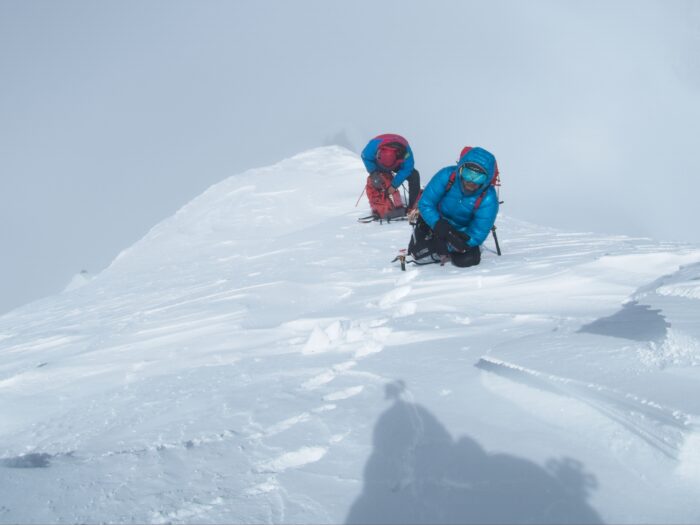
Hak and Groh on the last meters before the summit of Muchu Chhish. Photo: Jaroslav Bansky
The visibility improved a little below 7,000m, and they reached their bivy spot at 6,750m.
“The next day, we descended 1,500 vertical meters to the glacier,” said Hak. “Except for 100 meters of rappelling, we downclimbed the rest in scorching heat.”
The high temperatures triggered several avalanches and made the glacier unstable, slowing them further. They arrived at Base Camp later than expected, in the late afternoon. But they had done it.
A game of patience
In the end, the climb to Muchu Chhish was not as technically difficult as some other excellent climbs this year in Nepal, Pakistan, and the Indian Himalaya. It was rather a game of patience, stamina, and mental strength. The long climb on exhausting terrain was made worse by the excessively high temperatures, which have become a feature of the Pakistani summer of late. The heat is not only uncomfortable but makes conditions harder and more dangerous.
